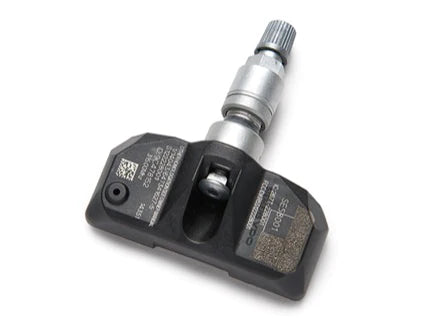
TPMS Sensors Explained
Share
There is a lot of confusion over TPMS sensors and customers struggle understanding when to replace or service, when to replace or how to get rid of a TPMS light.
Quick basics
-Most TPMS sensors are mounted on the *inside* of the wheel on the valve stem. Some early TPMS systems used sensors mounted on bands on the inside of the wheel but those are mostly gone by now.
-Regardless, to do anything to the sensor, the tire must be removed from the wheel, remounted and rebalanced.
-Sensors have batteries in them and these are not replaceable. Expected lifespan is 7-10 years for most sensors.
-Depending on the brand, sensors are somewhere between mostly universal to completely universal - but they need to be programmed or activated to output the correct info for the car they are getting installed on. If we sell you sensors we use our tool to activate them. If you buy sensors from other sources, make sure that they are programmed or activated for your vehicle. Not all TPMS Scan Tools (that we/shops use) can program all brands of sensors so this is important.
-Lastly on the basics - if sensors are changes, the car has to relearn them. Some cars learn them automatically, some have a process in the driver info center and some require programming through the OBD port using a shops TPMS Scan Tool. Also note that sometimes, you have to relearn the vehicle when you rotate tires.
When, Why, How
If your TPMS system is working correctly there is typically no reason to do *anything* with the sensors. Tires can be mounted or dismounted without touching them. Some shops try to sell a "TPMS Service" job which is replacing the rubber gasket on the valve stem part. Solo Performance Specialties does not do this unless there is an issue - you would never "service" a metal valve stem that was not leaking and we also subscribe to the "not broken, don't fix" theory.
If your vehicle is nearing 10 years old and you are getting new tires, you might consider having us replace the sensors at the same time, because if they start to fail (remember that 7-10 year lifespan) the tire has to be dismounted/remounted and rebalanced in order to replace the sensor later. This is not free, as of 2023 we would charge $30/tire labor to do this.
We keep sensors in stock and they are about $50 each and if we replace them when doing tires, there is no additional cost.
https://soloperformance.com/products/replacement-tpms-sensor-315-433
If you have a TPMS warning and your car shows pressure in each tire, you have it easy. You(or we) can check the pressure and if it is OK, we know the sensor is bad and needs replacement.
However, many cars just show a TPMS warning/low tire light. In this case, we can use our TPMS scan tool to check each sensor and find the bad one(s).
Sensors *rarely* fail for any other reason than pure age. So once again, if you are near that 7-10 year range and are getting tires, you might consider replacing them at the same time.
Finally - if you are ordering tires and wheels together from our favorite partner, Tire Rack, or any other source that mounts and balances the tires for free, we highly recommend purchasing TPMS sensors from them at the same time. It doesn't make financial sense to move the existing sensors from the old wheel/tires to the new ones - we have to dismount the tire from the old assembly ($10), dismount the tire from the new assembly (another $10), install the sensor (free), remount the tire (another $10) and usually rebalance the assembly (yet another $10)
After all that work, you then have older sensors in your brand new wheels. It just doesn't make financial sense to do it this way when you can purchase brand new sensors with the package from Tire Rack and they come activated and ready to be relearned to the vehicle when we install the tires and wheels.
Hopefully this info helps with some of the confusion around TPMS sensors.
